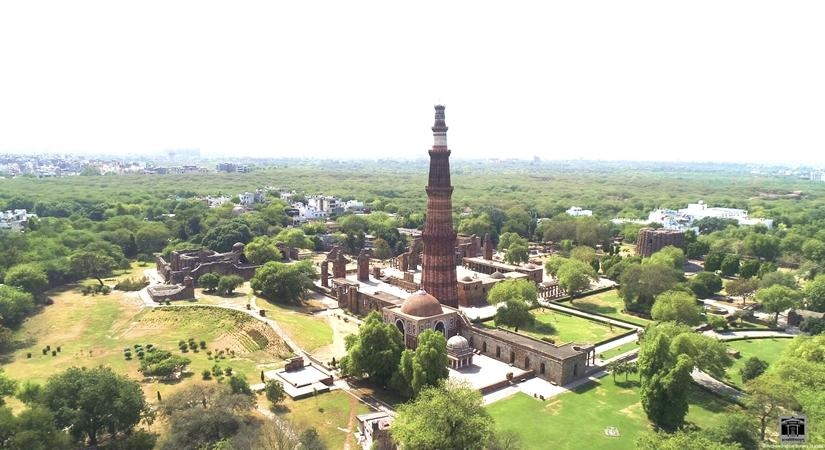An ongoing exhibition on the Delhi's 13th century archeological wonder Qutub Minar has reproductions of archival photographs, lithographs, sketches of the medieval monument by engineers and artists including engineer Ensign Blunt from 1794 and the cameras used for documenting the site.
The exhibits are from the collection of Archaeological Survey of India, Delhi Circle's archives. Titled 'The Silent Melody of Qutub Minar', the exhibition is on view till January 31, at the Art Gallery, India International Centre (IIC). It is jointly organised by the Archaeological Survey of India, Delhi Circle and IIC.
Of interest to viewers are photographs taken inside the tower when visitors were permitted to climb the winding circular stairwell; and also when they could put their arms around the Iron Pillar for good luck.
According to the organisers, the ASI has a large and important collection of photographs produced from the late 19th century onwards which forms a major resource both for the study of Indian architecture and archaeology, and for the early practice of archaeological photography in the subcontinent.
The photography holdings are also a rich resource material for the study of the development of photography. The original paper and glass negatives of the photographs include those taken by well-known photographers of the period such as Thomas Biggs, Edmund David Lyon, Robert Gill and Lala Deen Dayal among others.
On view are re-prints of archival photographs, some over 100 years old of Qutub Munar and its surrounding complex. A UNESCO World Heritage Site, the 13th century red sandstone tower with its surrounding funerary buildings has drawn distinguished visitors from around the world including that of India's first President, Dr. Rajendra Prasad; HRH Prince Philip, Duke of Edinburgh along with the Prince of Wales; then Yugoslavian President, Josip Broz Tito; and the Shah of Iran; renowned archaeologist, Sir Mortimer Wheeler are some of the well-known visitors to the site.
The photographs have been re-produced by ASI's technical team of the photography division from the negatives in their archives.
The exhibition also show cases sketches of the mediaeval tower by engineers and artists, including a pencil sketch by engineer Ensign Blunt from 1794. A special section is devoted to the cameras used from 1940's onwards by archaeologists of ASI to document their work recording history.
(IANS)




















